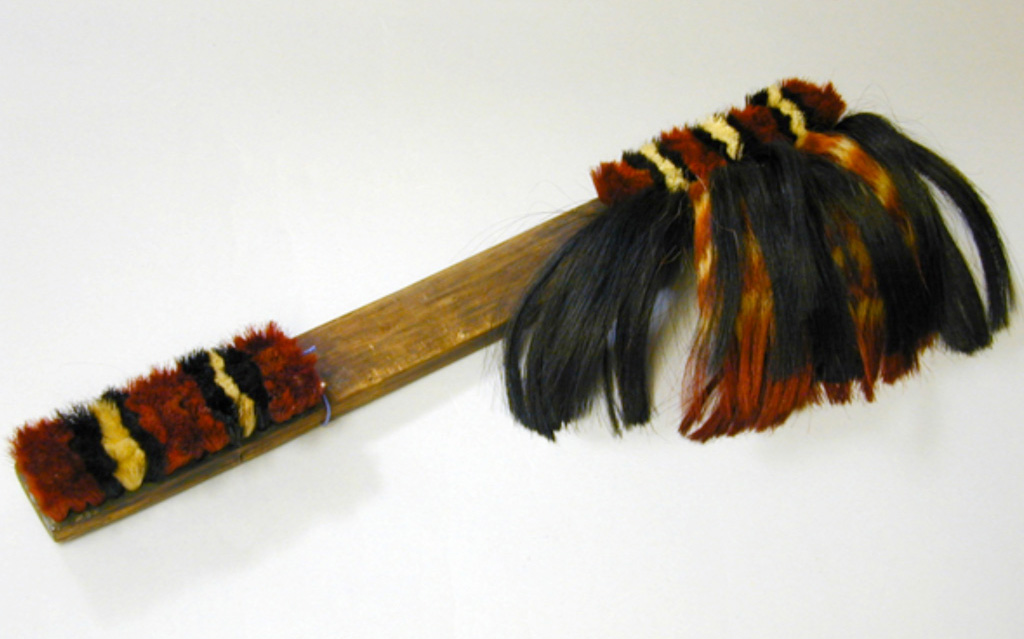Man's hair ornament
Konyak Naga people, Nagaland, India, early 20th century
 Collected by John Henry Hutton before 1919, and donated by him in 1928; 1923.84.500Most Naga ornaments have a particular meaning and are therefore powerful, so the right to wear them is strictly controlled. Hair is a primary focus for the men of all Naga groups. Older men often wore wigs made from different types of animal hair stitched on to a cane frame to conceal grey hair or baldness, and hornbill headdresses are a form or ritual dress denoting high status.
Collected by John Henry Hutton before 1919, and donated by him in 1928; 1923.84.500Most Naga ornaments have a particular meaning and are therefore powerful, so the right to wear them is strictly controlled. Hair is a primary focus for the men of all Naga groups. Older men often wore wigs made from different types of animal hair stitched on to a cane frame to conceal grey hair or baldness, and hornbill headdresses are a form or ritual dress denoting high status.
This large ornament, measuring 17 inches (43 cm) in length, consists of a wooden stick decorated at both ends with tufts of dyed goats hair. Men wound their own long hair around the central, bare part of the ornament so that the extensions would project from either side of his head. They were ornaments of status and could only be worn by male members of the chief's clan or those who had attained warrior status through success in raids or battle.
